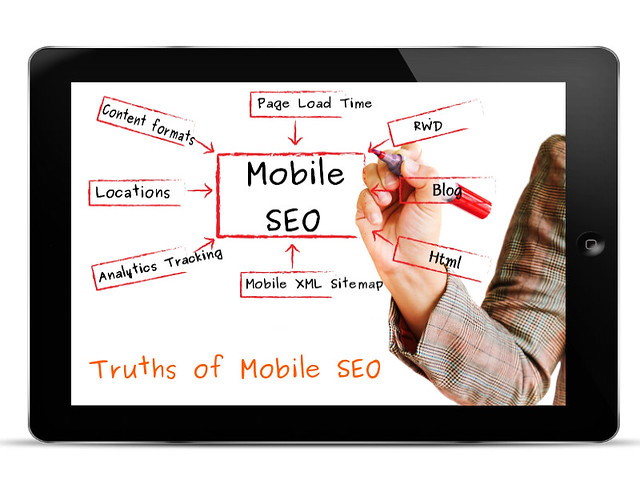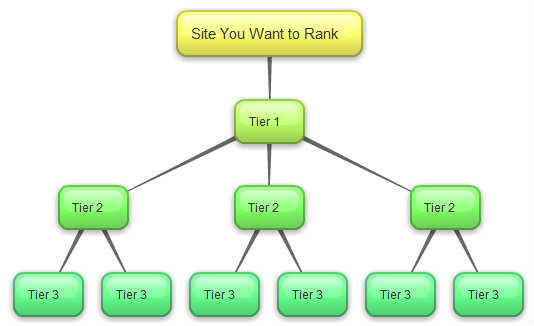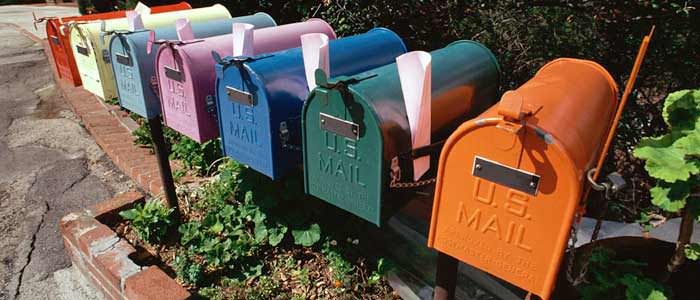There are a lot of tools in the SEO industry and over the years, we had learned that these SEO tools are used more than just increase website ranking; majority of us use these SEO tools for analytics and data collection.
Last year itself, we seen the departure of specific data which we use dearly for ranking a website and this made us extremely vulnerable when it comes to planning our godly SEO strategies.
SEO in 2014 would be slightly different from previous years as we will be facing extra challenges … which is collecting the right data. This is why it is important use the best search engine optimization tools to get the job done.
A quick rundown on Google and you may find dozens of tools out there but just like a majority of us, you will most likely puzzled and wondering which is best and of course, save you the most money (a.k.a. easy on your wallet).
This post is long and thus, bookmark this for future reference. By the way, have you checked out 2014 SEO tips from 21 industry experts?
You could easy get your hands on free SEO tools (and plugins) like Yoast SEO for free or premium ones that could easily cost hundreds of dollars monthly.
Either way, you need to find the best combination for all your SEO needs and honestly speaking, free online tools doesn’t always make the cut.
There is nothing called as the best SEO tools. The best are always the tools which best fit into your SEO strategy.
In this article, I will be sharing my search engine optimization strategy using various free and paid SEO tools which are divided into several categories:
- General research
- Competitor research
- Keyword research
- On-page SEO
- Rank tracking
I got to admit that the above might sound a little challenging especially if you are just a novice blogger. As much as I recommend you to have a list of tools at your own disposal, make sure you are financially ready as some of these tools are really costly.
Top 10 SEO tools for 2014
1. General research tools
- Google Webmaster Tool
- Google Analytics
The above are my first go-to tools when it comes to SEO planning especially when I am doing SEO services for my client.
These are tools which gives you the first sugar coating for your SEO strategy. Consider it as the base of your project.
Google Webmaster Tool
Powered by Google, you must be out of your mind if this is not one of your SEO tools for 2014!
Google Webmaster Tool gives you an idea on:
- HTML improvements
- Search queries
- External backlinks
- Manual spam action
- Crawl error
Under 30 minutes, you would be able to determine factors affecting your website ranking and possibly keywords which your website are ranking on search engine.
One of the best SEO tips is to ensure your website is SEO-ready even before you start engaging in any projects.
A huge part of Google Webmaster Tools are focused on on-page SEO and thus, it is always good to ensure your site is physically ready for any SEO plans.
Read more about On-Page and Off-Page SEO
Google Analytics
Another power SEO tool which is powered by Google and is in fact, one of the best tools out there when it comes to providing analytics data.
Google Analytics (some call it GA) offers truck load of stats and data for your ‘digestion’. GA fit nicely into my best SEO tools 2014 with the Search Engine Optimization feature (Acquisition > Search Engine Optimization).
In this category, you will be spoilt with not one but three important stats which are Queries, Landing Pages and Geographical Summary.
Geographical Summary is only useful if you are running SEO campaigns based on locations.
While Google is fond of removing even more data from various tools, both Google Analytics and Webmaster Tools are still able to provide sufficient information which will affect your overall SEO strategy.
2. Competitor research tools
- Ahrefs
- Majestic SEO
If you are thinking of ranking your website, it is a no brainer that you need to know who are your competitors. A friend of mine did told me that ranking the website is easy; All you need is to do ‘that’ slightly better than your competitor and you have the edge already.
Competitor research tools are used to understand how your competitors get their ranking and reverse engineer it until certain extend. This means that forget about copying exactly but instead, focus in building something better or more explosive than theirs.
Ahrefs
My personal favorite due to looks and user interface. Seriously.
Ahrefs provides better analytics data especially when it comes to finding external and internal backlinks. As much as Ahrefs is great for checking on your own site, I uses it to check on my competitor.
My overused features would be anchor text, domains and top pages.
With just the above 3 information, I could easily determine (roughly) what are my competitor’s SEO strategy and how it is working out for them.
The only issue with Ahrefs is that the free account comes with limited SEO requests and reports. To solve this, you may opt for the premium plan which starts at $79 per month.
If you are running an SEO agency, Ahrefs is one SEO tool you must have in your arsenal.
Majestic SEO
The direct competitor to Ahrefs and I had used Majestic SEO for over 2 years now.
Data from Ahrefs itself is not enough and thus, I merge them (on Excel) with the data collected from Majestic SEO.
Basically, Majestic SEO offers pretty much as what Ahrefs (and a dozen more SEO tools out there) in terms of features. However, since Majestic SEO and Ahrefs use different methods to measure the data, it is a great move to have a wider data.
Just like its competitor, Majestic SEO offers free accounts and premium ones would start from $42 per month.
Create a free account with Majestic SEO.
3. Keyword research tools
- Google Keyword Planner
- Long Tail Pro
Debate all you want; keyword research is still important when it comes to SEO.
My keyword research strategy lies in several phrases and tools such as general keywords and specific, long tail keywords.
While choosing the right keyword is one thing, using the keyword(s) is another important task as well. This is probably why I uses not one but two SEO tools just for keyword research.
Google Keyword Planner
Every keyword research strategy starts from here. Google Keyword Planner or GKP in short provides a list of keywords which we can use to rank our website.
Not only that, you can also use GKP to search for keywords your competitors are trying to rank as well. You may refer to this article which I wrote about Google Keyword Tool but the concept is very similar to the current Google Keyword Planner.
All you need is Excel and copy-pasting all the information into the list and sort them out. After sorting, you would have around 500 relevant keywords to kick start your SEO campaign.
For bloggers or content writers who are tight in budget, GKP is free and thus, is definitely the top 5 SEO tool for majority of us.
Related article: Step by step guide to use Google Keyword Planner
Long Tail Pro
Personally, I consider Long Tail Pro or LTP as an advance version of Google Keyword Planner. You can search up to 10 keywords at one time and check for the competition level.
Long Tail Pro is a great SEO tool as you can easily save hours in keyword research. With data collected from Google Keyword Planner, you can easily minimize the list into several high value keyword groups to increase the chances of ranking.
This is easily done by Long Tail Pro as it provides competition analysis and keyword ranking as well. With a one time fee of $97, this is an absolute must for bloggers and niche writers.
You may refer to my Long Tail Pro review or jump directly into the official website for more information.
4. On-page SEO tools
- Scribe SEO
- SEOPressor
One of the SEO best practices is to ensure your website is optimized for SEO.
Ring any bells? This is what we call on-page SEO, folks.
While having SEO agencies or consultants might be not an advisable plan for startups and small time bloggers, there are two tools which I would highly recommend when it comes to on-page SEO.
So, what is on-page SEO means?
Basically, it means using the right keyword density, utilizing the correct markup and to get some serious love from search engine bots.
Scribe SEO
If you think that my keyword research stops after using Long Tail Pro, you are absolutely wrong.
Scribe SEO is my next go-to SEO tool for composing blog posts. Basically, Scribe SEO provides a comprehensive research and analytics for you.
It works in a 4- steps procedure:
- Checking the chance of ranking for that specific keyword (competition analysis)
- Upon completion of blog post, it will analyze the keyword density by comparing not only that blog post but as well as the whole website to determine the chance of ranking on search engine
- Provide a list of recommended tags to use
- Recommending a list of external and internal links to build backlinks
Once you have completed the steps above, your blog post would be nearly to perfect in terms of keyword density and indirectly, improving the chance to rank on search engine.
Scribe SEO (some call it Scribe Content) price starts at $88 per month and this is a must-have SEO tool in 2014 if you are serious in dominating the SERPs.
Did I mentioned that this is managed by the guys from StudioPress?
Take Scribe SEO for a 30-days trial run or grab your free SEO report here.
SEOPressor
One of the biggest issue with keyword research tools like Scribe Content is that they are pricey. Therefore, say hello to SEOPressor.
SEOPressor is one of the most popular SEO plugin for WordPress users simply because it provides features such as:
- On-page SEO analysis
- Keyword suggestions
- Over optimization check
- Rich snippet
- LSI (Latent Semantic Indexing) suggestions
- Social SEO
- Automatic internal linking
- Video embedded suggestion
With pricing starts from $47, there is absolutely no reason for you to complaint that it is expensive or you are not affordable for it.
Personally, SEOPressor is a great alternative to Scribe SEO as it provides great value and SEO features with a one-time payment.
Double your traffic under 14 days using SEOPressor or money back guarantee!
5. Rank Tracking tool
- SEMrush
When it comes to SEO planning and strategy, tracking and monitoring keywords play vital roles.
Blogging is always a business and you need to think like an SEO strategist to compete with your competitors. This means that you need to plan not one but multiple SEO marketing strategies to achieve results.
Tracking tools are extremely important when it comes to SEO keyword strategy. Looking at the above, you will notice that a huge chunk of your time are used to find quality keywords for your site.
And the next step is to ensure your hardwork pays off.
So, if you are not tracking your keywords now, you better do it right now!
SEMrush
I got to admit; SEMrush isn’t the best tool for tracking keywords. The main purpose of SEMrush is to track Google Adwords keywords.
However, you can actually use this to your advantage … yes, by tracking related keywords on your blog.
On a free account, you can create up to 10 keywords for tracking. I usually set up long tail keywords. Choice of keywords can be taken from Google Analytics, Google Keyword Planner, Google Webmaster Tools or any research tools of your choice.
SEMrush will then populate the keywords which you are planning to rank and the stats will be updated once every day.
And you might be wondering, “Okay, I am lost. How can SEMrush possibly be one of the best SEO tools available to mankind?”
Allow me explain a little more in detail.
SEMrush is one of the SEO tools for 2014 as I consider it as an all-in-one SEO software that monitors nearly everything. For example, it offers:
- Organic research
- Backlink checker
- Keyword research
- Position tracking
- Domain vs domain
- Rankings
I do know a few serious (and experienced) bloggers who use SEMrush to cater for all their SEO needs but personally, I use it for organic research and position tracking only.
You can sign up for a free SEMrush account here. Paid accounts start from $69.95 per month.
All in one SEO tool – SEO PowerSuite
When it comes to search engine optimization, it is really hard to find a good SEO tool that does everything for you. As a matter of fact, I used to think that it never exist.
With so many SEO tools out there for us to choose, we are often wondering which is the best and worth our money.
Sounds familiar?
I bet it does.Okay, I admit it. Call me a plugin or SEO tool freak. My love for them will never fade.
Introducing the almighty, SEO PowerSuite.
SEO PowerSuite (some call it SEO PS) is probably the most expensive single piece of SEO tool I ever bought in my life.
So, is SEO PowerSuite worth it?
While SEO PowerSuite is just one piece of SEO tool, it actually consists of several parts (or features):
- Rank Tracker
- Website Auditor
- SEO Spyglass
- Link Assistant
Yes, 4 features which can skyrocket your SEO campaigns in 2014.
Rank Tracker
One of the top 3 ranking tools I ever use. Extremely useful (and fast) when it comes to following up on your keywords rankings. If you are planning to do mass keyword ranking check or multiple domains, it is best to use private proxies to avoid temporary ban from Google.
While it offers a whopping keyword ranking check on over 346 search engines, I only check on Google, Bing and Yahoo for obvious reasons.
Website Auditor
When a client of mine ask for SEO services, this is the number one tool I use to check for on-page SEO. If you want to check ever corner, worm hole and tiny 404 errors, this is one tool you need to use.
Trust me when I tell you this is one of the best website auditing tool I ever … ever used!
- Want to check if your robot.txt is working? Done!
- Want to build robot.text but no idea how? Do it with Website Auditor!
- Want to check if your website have crawl issues? Done!
Don’t get me wrong. I am not trying to hard sell Website Auditor (okay, maybe a little) but seriously, this is seriously one bad-a*s tool to use.
The only issue you may face is that when you are generating a report for every tiny bit of problem with your site, it could take hours. My longest experience was 18 hours.
Go figure!
SEO Spyglass
If you want to know what your competitor is doing, what keywords are they trying to rank for or even, anchor texts they are using, this tool will tell you everything you need to know.
SEO Spyglass = Backlink checker. Period!
Link Assistant
Link Assistant is a powerful … and not so powerful tool.
If you are using it correctly, you can easily turn Link Assistant into a Virtual Assistant that does all your link building works, emailing etc.
And of course, if you have no idea what it is all about, then you are probably not going far with this tool.
In short, Link Assistant is a management tool that helps you to:
- Store data (all your links) in a bullet proof, nuclear resistance ‘space’
- Tool to verify backlinks
- Reach out to webmasters for link building opportunities
SEO PowerSuite comes in three plans:
- Free
- Professional
- Enterprise
For me, I am using Enterprise version as I need to export data for further usage.
Free SEO PowerSuite trial download | Buy SEO PowerSuite
What is your favorite tool when it comes to search engine optimization?
Always remember that one of the best SEO tips for 2014 is to use the right tool for the right job. There is absolutely no point using a specific tool if you have no idea how to utilize it.
So, what is your go-to SEO tools that you must use in 2014? Tell me using the comment form below!







































